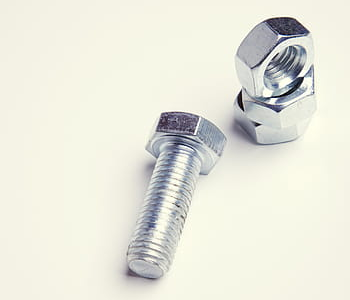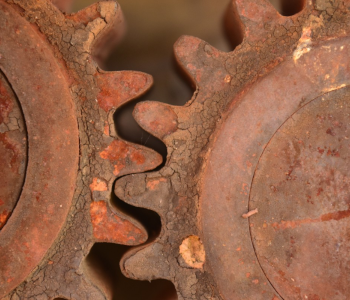Zinc-Nickel Coating: What Is It and Why Is It Used?
The discovery of metal processing is one of the most important breakthroughs that have given way to a new era of manufacturing and technology. Nowadays, metal products are valued for their strength, durability, and workability. However, there’s a naturally occurring phenomenon that is the bane of all metal structures: corrosion.
Corrosion is merely the oxidation of metal products – an unavoidable process. Thus, metal manufacturers have developed several methods of protecting their products from the deleterious effects of corrosion. One of the most common methods is to apply a zinc-nickel coating to metal. Why is this so widely practiced and how does it work? What are its benefits and limitations?
What is zinc-nickel coating?

Zinc-nickel is an alloy coating that is applied to steel, cast iron, or powdered metals as a means of corrosion protection. The development and application of this technology started back in the 1980s and was driven primarily by the automotive industry, which needed a method of corrosion protection that can withstand extreme climate conditions, different temperatures, and road salt. Nowadays, zinc-nickel plating has been adopted by the heavy construction industry, agricultural equipment, and aerospace travel.
Before zinc-nickel coatings became widely used, pure zinc coatings were quite common. However, salt tests and cyclic corrosion tests have shown that zinc-nickel coatings outperform zinc coatings by a factor of four. With such an improvement, zinc-nickel coatings can extend the useful life of machinery and construction materials by several years.
Most zinc-nickel applications are made using a mixture of 85% zinc and 15% nickel. They are electroplated directly on the metal substrate and covered by a layer of chromate and another layer of sealant on top. On top of excellent corrosion protection, zinc-nickel coatings are valued because they offer good resistance against the usual wear and tear and extreme thermal stress. Because of these characteristics, many in the industry have referred to zinc-nickel as a high-performance coating.
How does it work?
A zinc-nickel coating protects the metal substrate against corrosion because it acts as a sacrificial anode. Corrosion is merely a phenomenon where the metal reacts to the oxygen in the environment, resulting in the formation of a metal oxide. This process consumes the metal, thus weakening any construction structures or machine parts. When exposed to an aqueous environment, a metal part experiences accelerated corrosion because of the abundance of oxygen atoms in water.
When in proximity with cast iron or steel, zinc acts as a sacrificial anode because of its more negative electrochemical potential. This means that zinc is more prone to oxidation, thereby being “sacrificed” to prevent the oxidation of the metal substrate. To put it simply, zinc is simply more reactive with oxygen than cast iron or steel.
On the surface, pure zinc should be more sacrificial than a zinc-nickel mixture. However, a simple phase diagram shows that the gamma phase of a zinc-nickel mixture with a 14 to 25% nickel by weight has better corrosion resistance when applied over steel or cast iron. Moreover, the mixture also has better ductility, allowing for better and easier application of the coating. This characteristic holds true over the temperature range of 0 to 700 °C, which means that the performance of zinc-nickel coatings can be predicted for virtually all practical applications.
What are the benefits of zinc-nickel coating?
1. Better corrosion protection

Side-by-side corrosion tests have consistently shown that zinc-nickel coating are three to five times more effective in protecting against corrosion than pure zinc coatings. In terms of effectivity, zinc-nickel is comparable to cadmium – a compound that is no longer being used because of reasons we’ll get to later.
Moreover, zinc-nickel coating is also an effective retardant to galvanic corrosion, a process in which one metal corrodes another. This typically happens when aluminum and steel are bound together, such as in most automotive components.
2. Wear resistance
Zinc-nickel forms a uniform crystalline structure that can be applied exceptionally consistently. The result is a thin and very even protective layer with almost no irregularities. This characteristic reduces the effects of friction and abrasion against a zinc-nickel coating, allowing it to endure physical wear and tear for longer. A zinc-nickel coating has a rating of 450 in the Vickers hardness scale, a substantial upgrade from the 150 of a pure zinc coating.
3. Protects against thermal stress
Electrochemical potential values can vary according to temperature, which also determines how effective they are in protecting against corrosion. This property can be very important for machine and automotive parts that can be exposed to extreme working temperatures. Zinc-nickel coatings retain good corrosion resistance up to 200 °C, past which the resistance effectivity drops off gradually. This is still an upgrade over a pure zinc coating, which can only maintain its corrosion resistance up to 120 °C.
4. Good throwing characteristics
Zinc-nickel coatings are applied using an electroplating process, which allows the deposition of a very thin and even layer on the substrate while also giving the finished product a brighter and more visually appealing finish. The advantage of using a zinc-nickel alloy is that it has superior throwing characteristics, which means that it more easily fills in recessed areas and blind holes in the substrate. This can be very important for highly detailed or very small machine parts.
5. Environmentally safe
In terms of electrochemical potential, the only metal with a similar value to the zinc-nickel alloy is cadmium. Although cadmium coatings used to be more common, the practice has been greatly reduced in the past several years due to concerns over the harmful effects of cadmium waste on the environment. Cadmium has also been shown to be a carcinogenic compound and associated with respiratory problems and organ failure, making it hazardous for workers and users.
Applications of zinc-nickel coating
1. Automotives
The automotive industry has been the number one driver for the adoption of zinc-nickel coating technology. Zinc-nickel is uniquely suited as corrosion protection for automotive parts that regularly have to undergo a lot of friction and abrasion. The internal parts of an automotive are exposed to extreme temperatures, while the external parts have to endure lots of salt spray. With all the right solutions for the problems of the automotive industry, zinc-nickel coatings have the go-to option for corrosion protection.
2. Electrical transmission
The wear resistance of zinc-nickel coating makes it excellent for applications that are frequently or permanently exposed to outdoor conditions. For this reason, the anchors, bolts, and cables of electrical transmission systems are typically treated with a zinc-nickel coating. Since a zinc-nickel coating can be applied to have a thin and even layer, it is highly suitable for the small and intricate details of these metal parts.
3. Agricultural equipment
Aside from the fact that they are always exposed to outdoor elements, agricultural equipment also have to contend with the corrosive effect of harsh chemicals such as pesticides and fertilizers. When you consider the fact that these large machinery often have to sit idle for several months, it becomes more clear how important the proper corrosion treatment is for them.
4. Aircraft manufacturing

For decades, cadmium has been the coating of choice for aircraft parts and equipment, such as the landing gear. However, recent developments about the dangers that cadmium poses to humans and the environment have prompted the aircraft manufacturing industry to start considering other materials. Naturally, zinc-nickel is at the top of this list. Since zinc-nickel has been proven to pass the baseline performance characteristics of cadmium in terms of corrosion resistance, adhesion, and fatigue, it’s only a matter of time before the industry as a whole adopts the technology.
Limitations of zinc-nickel coating
If zinc-nickel is so superior to pure zinc coatings, then why don’t all the industries simply use it for all their metal products? The answer, as with many things, can be traced back to money. A zinc-nickel coating can be up to five times more expensive than an equivalent coating made of pure zinc, restricting its use to cases where it is practical or economical.
In the interest of economics, parts that are not exposed to corrosive agents, significant wear, or thermal stress are not candidates for receiving a zinc-nickel coating. Even parts that seem like good candidates for zinc-nickel coating need to be assessed according to how essential they are or how cheaply or easily they can be replaced.
There’s also the fact that the technology of zinc coating continues to be developed, helping keep it competitive with zinc-nickel. With new passivation and coating technologies, zinc coatings have evolved to address many of its deficiencies. These new developments have kept the zinc coating technology afloat despite the emergence of superior zinc-nickel.
How is zinc-nickel coating applied?
The application of a zinc-nickel coating layer is done through the use of electroplating technology. Electroplating or electrogalvanizing is an old method that has been used to apply metals or alloys in a thin and even coat on a large metal substrate through the application of an electrical current in an aqueous solution. This is the same method used in applying pure zinc coatings.
Before the electroplating process was developed, metal parts were coated with zinc using hot dip galvanizing – essentially dipping the part in molten zinc. Electroplating has numerous advantages, including better conversion, the lower thickness of the deposits, and a brighter finish.
For zinc-nickel applications, electroplating is done by first creating a solution that contains about 85% zinc and 15% nickel by weight. Caustic soda is commonly mixed in with the solution to create an alkaline environment, although a new acidic solution has also been formulated using hydrochloric acid and boric acid. The alkaline solution is preferred by many because of the protection it provides against hydrogen embrittlement, but the acidic solution creates a brighter and more visually appealing coating for the price of losing hydrogen embrittlement protection.
The process for coating a metal part in zinc-nickel proceeds by dipping the part in the zinc-nickel solution – the electrolyte bath- and applying an electrical current. This binds the zinc and nickel ions in solution to the metal in a permanent, even, and extremely thin layer. This coating is then layered with a chromium coating film and another top-coat that enhances wear resistance and corrosion protection.
Final thoughts
Corrosion is an issue we all have encountered. Whether it’s in our keys, electrical devices, or home appliances, corrosion is simply how time affects any metal products that are in constant exposure to any level of humidity.
If corrosion is problematic to us, then its consequences are multiplied in industrial and commercial settings. To prevent the loss of profit due to damaged parts and downtime, many industries have taken to using metal parts treated with corrosion protection. Zinc-nickel is one such technology and one of the most commonly used. While it’s not perfect, it’s extremely effective, and we only expect zinc-nickel corrosive coatings to be even more widely used in the coming years.

